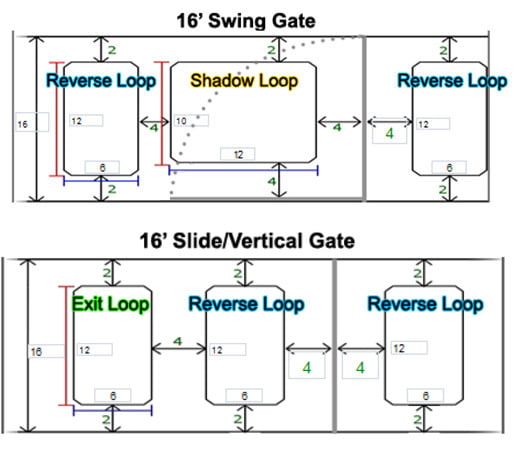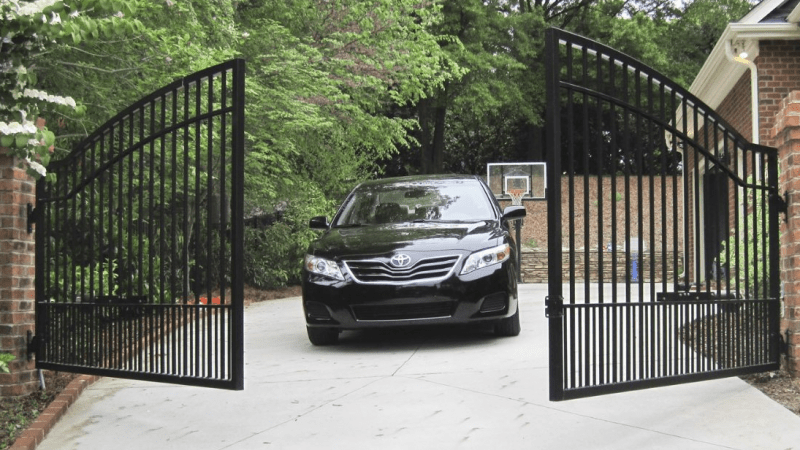Inductance loops are a crucial component of gate systems, providing both convenience and safety for the user. Understanding the function of inductance loops can be challenging, but it is an important aspect of selling more loops and accessories. In this article, we’ll explain how loops work, how many loops your system needs, the difference between reverse and exit loops, and the benefits of preformed loops.
How do Loops Work? Inductance loops work based on the principle of inductance, not magnetism. This is why they are also known as inductance loops. The loops detect any material that conducts electricity well, such as metal, by measuring changes in the electrical field. Depending on the sensitivity of the system, even a small object such as a metal trash can lid can trigger a detection.
Many people mistakenly believe that loops work off magnetism or pressure. However, most magnetic materials contain iron and can be detected. Non-magnetic materials such as aluminum and copper, which are excellent conductors of electricity, can also be detected by loops. When it comes to pressure, loops are not air hoses or pressure plates that respond to weight, and this can cause confusion for customers who expect their heavy objects to be detected. To explain the function of loops simply, we often tell homeowners that loops detect large metal objects such as cars and motorcycles.
How many Loops Does My System Need? The number of loops required depends on the type of gate. For a Slide Gate, Cantilever Gate, Vertical Lift, or Vertical Pivot Gate, two loops are needed: an inside reverse or exit loop and an outside reverse loop. An additional exit loop further down the driveway can be installed if space permits. For a Swing Gate, three loops are needed: an inside reverse or exit loop, a shadow loop under the gate swing path, and an outside reverse loop.
What is the Difference between Reverse and Exit Loops? Exit loops automatically open the gate when a vehicle drives over them and can also hold a gate open or reverse a closing gate. Reverse loops, on the other hand, will reverse a closing gate if a vehicle is detected and hold a gate open if a vehicle stops over the loop. However, if a gate is fully closed and a vehicle drives over a reverse loop, nothing will happen, and the gate will not open.
Features and Benefits of Preformed Loops: Exit/Free Exit/Automatic Open Loops: No more waiting 15-30 seconds to leave your property every day! With an exit loop installed, the gate will automatically open for you as you exit, without requiring any remotes. This also allows guests on your property to leave without you having to follow them out to open the gate. For added convenience, exit loops can be placed up the driveway (40-200 feet) so that the gate will be fully open by the time the car reaches it.
Shadow/Phantom/Center Loop: Many installers don’t fully understand the function of this loop, but it is crucial for swing gates. The shadow loop is placed under the swing path of the swing gate and checks if there is a vehicle within the swing path before the gate closes or opens. If a vehicle is within the swing path, the gate will not move, avoiding potential accidents.
Reverse Loops: Reverse loops offer customers peace of mind by holding the gate open or reversing a closing gate if a vehicle is detected. This can prevent panic and risky actions when a gate is closing. Reverse loops are important in scenarios such as vehicle tailgating, exiting and finding an object blocking the driveway, or a guest leaving their property and waiting for an opening to pull out.
Free Exit loops automatically open the gate when a vehicle drives over them and hold a gate open, reversing a closing gate. Reverse loops, on the other hand, reverse a closing gate if a vehicle is detected and hold a gate open if a vehicle stops over the loop.
The benefits of inductive loops are numerous. Exit loops allow for automatic gate opening without the need for remotes, and guests can leave your property without the need for someone to follow them out and open the gate. Shadow loops, also known as phantom or center loops, are placed under the swing path of a swing gate and prevent the gate from moving if a vehicle is within the swing path. Reverse loops offer peace of mind and prevent panic and risky actions when a gate is closing.
If you would like to learn more about inductive loops and their benefits, visit progatecontrols.com. Our website offers comprehensive information on inductive loops and how they can enhance your gate system. Browse our site to find the information you need to make an informed decision about inductive loops for your gate system.
Image source: http://www.bdloops.com/placement_and_size.html



